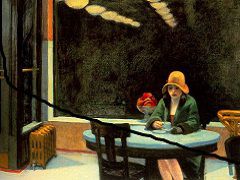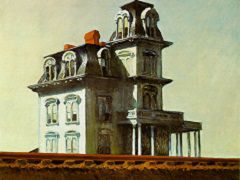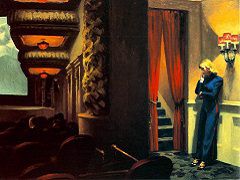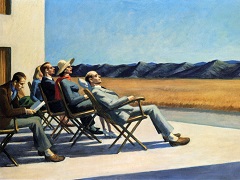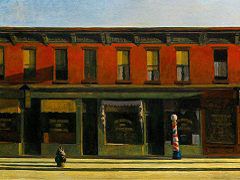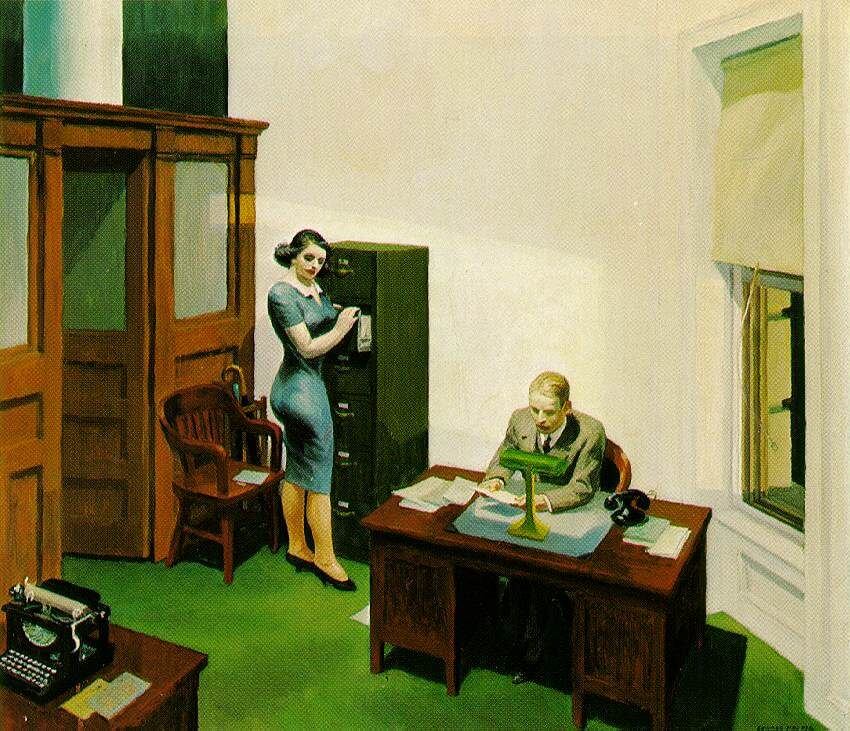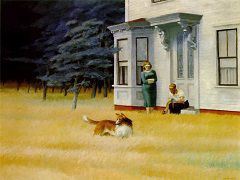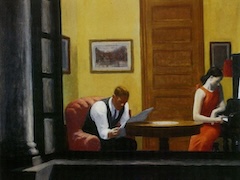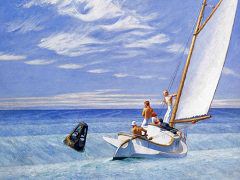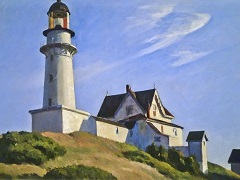Gas, 1940 by Edward Hopper

The highway apparently ends here, disappearing into the woods - not a promising location for a gas station. The last car seems to have passed long ago; the attendant is shutting down the pump, and soon will turn off the lights and lock
up for the night.
Hopper's painting represents a borderline situation. It is set at the frontier between day and night, between civilization and nature. The gas station has the appearance of a last outpost, where the human realm gives way, across the road,
to the anonymous realm of nature. the edge of the woods rises like a dark wall in which no individual tree can be discerned. But our eye returns again and again to its warm hue. The bright, almost pure white fluorescent light in the gas
station, in contrast, is almost painful to look at, and the eye shifts to the ribbon of road leading out of the picture to the right.
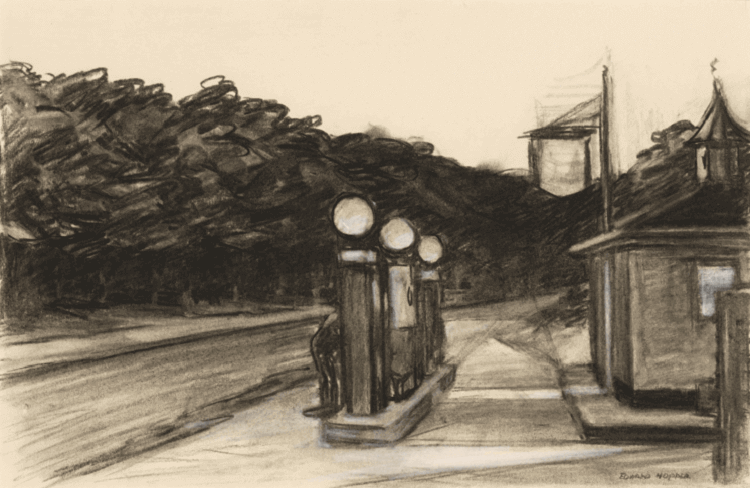
Man in Hopper's work is a subordinate creature, a flea, a bit of living spark caught in the innards of an architectural or industrial trap, much like Van Gogh's Weaver encased in their looms.


